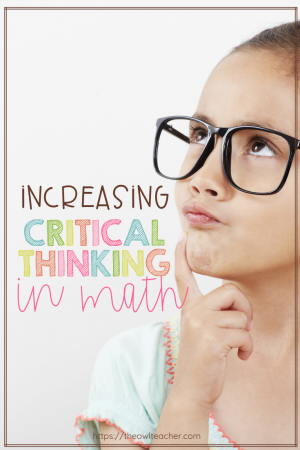Teachers often wonder: Why is critical thinking important for students? Teachers have their own unique set of challenges, but this doesn’t mean that they should neglect critical thinking. In fact, critical thinking is a necessary skill for academic success. However, some teachers find it hard to incorporate this skill into their classes. Creative solutions for this challenge may include small discussions that occur during lectures or changing the format of classes. Regardless of the reason, teachers can always incorporate some critical thinking into their classes, if they make sure that the students are engaged in the learning process.
Develop open-ended questions
One of the most effective ways to foster critical thinking skills in children is to develop open-ended questions. By asking open-ended questions, students are challenged to analyze content and discuss their thinking and reasoning. These questions also serve as a catalyst for rich discussions, resulting in more engaged and motivated learners. Here are some examples of open-ended questions. For example, a teacher might ask a student to look at the front and back covers of a book and make a guess about what the story is about.
Encourage children to ask them
One of the best ways to foster critical thinking in children is to create a scenario where children are asked to compare two things. For example, they might be asked to compare the schedule of a train and a bus. By relating two situations to each other, they will learn how to think critically in different situations and apply their prior knowledge. Here are some creative ideas to help your child develop critical thinking skills:
Help them identify the sources of information
The first step in teaching students to identify the sources of information is to identify the different types of sources. A good resource for this is the Word on College Reading and Writing by Carol Burnell, Jaime Wood, and Monique Babin. The text includes a section on finding quality texts. This section includes a graphic that shows which sources are biased. Students can analyze the differences between two news sites and explain their choices. Further research may also reveal the factors that influence students’ source selection.
Encourage them to ask open-ended questions
Open-ended questions are powerful learning tools. They encourage students to think for themselves, challenge their assumptions, and reveal their own perspectives. As a result, children become motivated and engaged learners who are more likely to share their ideas and thoughts with others. Open-ended questions also provide students with a valuable source of feedback. This article explores four strategies to help teachers encourage students to ask open-ended questions when critical thinking.
Encourage them to be curious
Educators can encourage curiosity by highlighting the importance of quality questions. Whenever students find a new idea or find an interesting fact, encourage them to ask questions that go beyond the obvious. Use a variety of sources to encourage them to research new ideas and challenges existing ones, and show them that their work is valued. To promote curiosity in students, consider reading PebbleGo, a blog series about critical thinking and question-asking.

